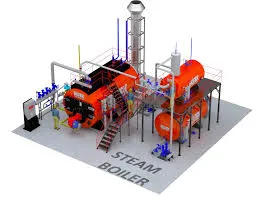
Oct . 12, 2024 02:46 Back to list
high pressure steam system
High Pressure Steam Systems A Comprehensive Overview
High pressure steam systems are an integral part of many industries, providing essential services such as heating, power generation, and process operations. Understanding the principles, components, advantages, and regulations surrounding these systems is critical for engineers, operators, and maintenance personnel to ensure safe and efficient operation.
Principles of High Pressure Steam Systems
High pressure steam systems operate under the principle of converting water into steam through the application of heat. This steam, maintained at pressures typically exceeding 15 psi (pounds per square inch), carries high energy content, making it effective for various applications. The steam is generated in specialized boilers designed to withstand the stress of high pressures. As the steam moves through pipelines, it can be directed towards turbines for electricity generation or used for heating in industrial processes.
Key Components
1. Boiler The heart of the steam system, where water is heated and converted into steam. High pressure boilers are equipped with safety features and automatic controls to maintain optimal pressure and temperature.
2. Pipes and Valves The system includes an extensive network of pipes that transport steam. High-quality materials are used to withstand the elevated pressures and temperatures. Valves control the flow of steam, allowing for adjustments and safety measures.
3. Steam Turbine In power generation, steam turbines convert the thermal energy of steam into mechanical energy, which is then transformed into electrical energy.
4. Condensate Return System After steam has served its purpose, it condenses back into water. This condensate is returned to the boiler, allowing for efficient use of resources and energy recycling.
5. Control Systems Advanced instrumentation and control systems monitor various parameters such as pressure, temperature, and flow rate. Automation enhances efficiency, safety, and operational reliability.
Advantages of High Pressure Steam Systems
1. Energy Efficiency Operating at high pressures allows steam to carry more energy, resulting in improved efficiency in heating and power generation. It can also decrease the required amount of fuel, reducing operating costs.
high pressure steam system

2. Space Saving High pressure steam systems can use smaller pipes and equipment due to the high energy density of steam. This compactness saves space in manufacturing plants and reduces installation costs.
3. Flexibility These systems can be easily adapted for various applications, from heating buildings to powering turbines in large-scale power plants.
4. Reduced Emissions By improving efficiency and utilizing advanced combustion technologies, high pressure steam systems can contribute to lower greenhouse gas emissions compared to traditional fossil fuel-powered systems.
Safety Considerations
Operating high pressure steam systems poses inherent risks. Ensuring safety is paramount, and this involves regular maintenance, inspections, and staff training. Key safety measures include
- Pressure Relief Valves These prevent dangerous over-pressurization of the system. - Regular Inspections Steam systems should undergo routine checks to identify potential wear and tear, leaks, or component failures.
- Training Programs Personnel operating the system need thorough training on safety protocols and emergency response.
Regulatory Compliance
High pressure steam systems are subject to strict regulatory standards. Compliance with standards set by organizations such as the American Society of Mechanical Engineers (ASME) and the Occupational Safety and Health Administration (OSHA) is essential. These regulations help ensure safety, reliability, and environmental protection.
Conclusion
High pressure steam systems are critical to modern industrial operations, offering significant benefits in terms of efficiency, flexibility, and space utilization. However, they come with inherent risks that must be managed through rigorous safety measures and regulatory compliance. By understanding the principles, components, and operational strategies of these systems, industries can harness their advantages while minimizing risks, ultimately contributing to a more sustainable and energy-efficient future. As technology continues to evolve, the role of high pressure steam systems will likely expand, incorporating innovations that enhance performance, safety, and environmental stewardship.
-
High-Efficiency Commercial Oil Fired Steam Boiler for Industry
NewsJul.30,2025
-
High-Efficiency Biomass Fired Thermal Oil Boiler Solutions
NewsJul.30,2025
-
High Efficiency Gas Fired Thermal Oil Boiler for Industrial Heating
NewsJul.29,2025
-
High-Efficiency Gas Fired Hot Water Boiler for Sale – Reliable & Affordable
NewsJul.29,2025
-
High Efficiency Biomass Fired Hot Water Boiler for Industrial and Commercial Use
NewsJul.29,2025
-
High-Efficiency Biomass Fired Hot Water Boiler for Industrial Use
NewsJul.28,2025
Related PRODUCTS






















